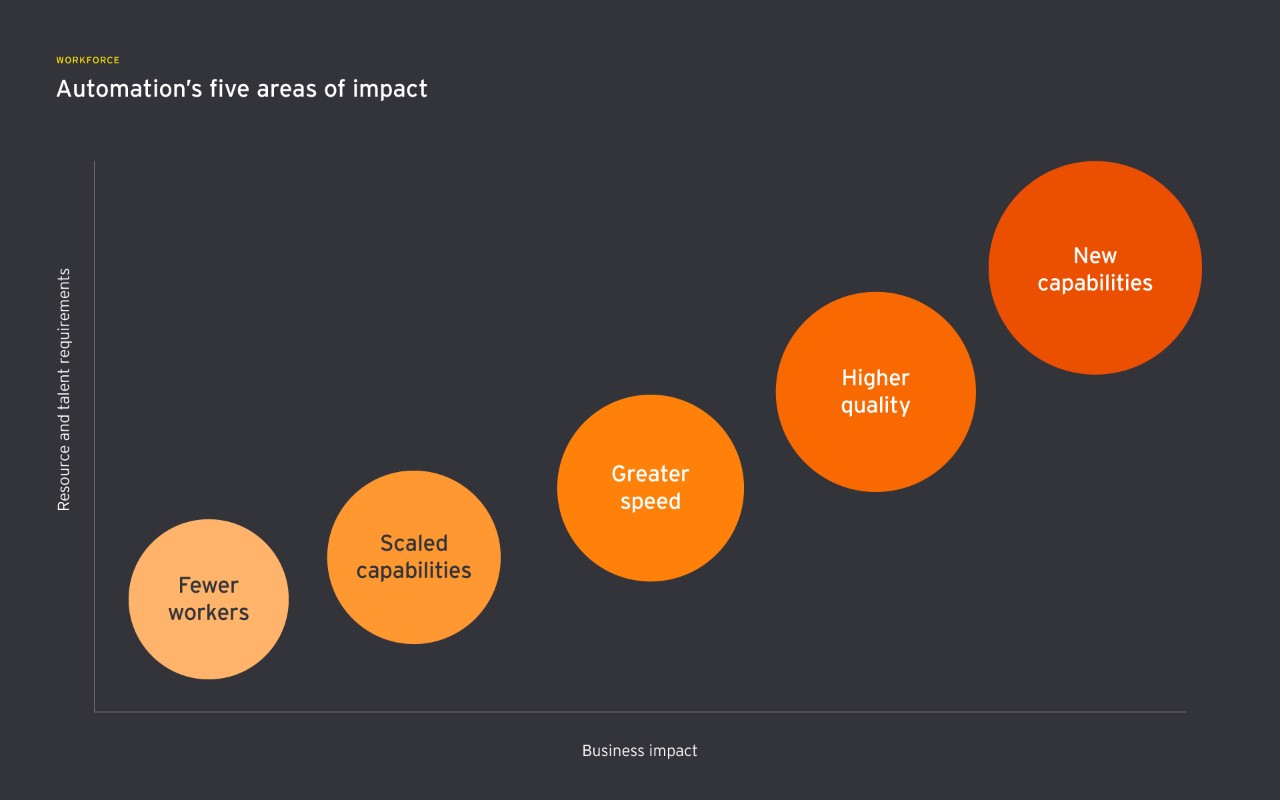New Normal, New Pressures: Automation's Five Areas of Impact
Share at:

As businesses anticipate emerging from the 2019 novel coronavirus (COVID-19) crisis, executives need new ways to get back on track—and quickly. Suddenly, it seems that just about every part of their business needs serious attention. This includes jumpstarting revenue generation efforts, controlling inflated costs, freeing overburdened resources, addressing supply chain issues, and developing new processes and operations to serve customers and partners.
While many businesses wrestled with these same issues before COVID-19, they must now solve these challenges faster—exponentially faster—than ever before.
A quote from a recent McKinsey Digital article says it best:
“If the pace of the pre-coronavirus world was already fast, the luxury of time now seems to have disappeared completely. Businesses that once mapped digital strategy in one- to three-year phases must now scale their initiatives in a matter of days or weeks.”
Automation can help
In our recent webinar, It’s Time to Automate: How RPA Drives Business Value in a Global Crisis, UiPath Chief Marketing Officer (CMO) Bobby Patrick described the position virtually every business is in right now:
“We’re poised somewhere between COVID-19 emergency mode (where we all did our best to preserve revenues, deliver the best customer experiences, and manage a newly remote workforce) and the upcoming ‘new normal,’ where the race is on to deliver digital outcomes to every part of the organization.”
Robotic Process Automation (RPA) can—and will—play a significant role in the recovery. An EY article, The Future Workplace: How to Automate Intelligently, included the concept of five key areas of automation impact (see chart below).
By understanding these areas of impact, business leaders can better prioritize decisions and efforts for maximum gain. While the EY article was written before the current COVID-19 pandemic, these areas can now inform and guide new digital strategies to help businesses get back on track.

Let’s take a closer look at these areas of automation impact and how they can accelerate the path to real business value.
1. Fewer workers
Automating time-consuming tasks and processes is a proven way to reduce costs and deliver employee-based savings. Yet, as we emerge from the current COVID-19 crisis, RPA is able to help employees reskill or upskill to take on higher-value work.
Recommended read: There’s a Wealth of Potential Automation Professionals—They Just Need to be Trained
We’re all familiar with the earlier misconception that robots would replace human workers. Not only is this not true, but automation is now able to save and even create jobs, especially when it’s the vital difference in helping companies reopen. For example, a UiPath electronics manufacturing customer has already restarted work at plants by automating personal protective equipment (PPE) dispatch and reporting processes—a critical effort in saving jobs and generating revenue again.
2. Scaled capabilities
In this case, power of automation can expand the access of a particular capability, delivering new benefits throughout the organization.
Consider the example of an automation that helped a financial services company handle the surge in mortgage hold requests. By making this available throughout the organization, this company was able to streamline processes and enhance the customer experience during a difficult time.
3. Greater speed
It may seem obvious that automating time-consuming tasks enables work to be completed faster than ever and drive productivity to new highs. All true, but now automation is a critical advantage, especially since it represents a huge opportunity to gain new efficiencies, reduce costs, and increase the company’s overall competitive advantage.
Another UiPath customer, a Fortune 50 financial services firm, automated the investigation efforts related to declined debit card transactions. This bank saved 30 seconds per call—a significant accomplishment given that the company receives nearly 10 million calls per year.
4. Higher quality
Companies can rely on automation to achieve much higher-quality results than might be possible without it.
This is especially true in accounting, accounts payable, finance, and payroll departments where software robots can perform account reconciliations, generate and validate invoices, flag timesheet errors and omissions, and so much more. Accuracy increases, errors go down, and the entire organization is freed to focus on other more important tasks when organizations implement RPA.
5. New capabilities
This area has the potential to deliver the most benefits to the organization. Companies can use automation to develop innovative new algorithms and create new tasks, processes, or operations that no employee may be focused on today.
This can be crucial in the COVID-19 crisis. For example, a major retailer successfully opened stores and franchises faster than anticipated by developing an automation that managed daily health screenings, wellness tracking, and assurance for employees. Not only did this save jobs, but it helped the retailer connect with customers in new ways and create new experiences to drive long-term loyalty.
Mapping the road to the new normal
Unfortunately, we’re all facing the same challenge: how to reopen safely and get vital business operations back on track as quickly as possible. Automation is one effective way to accomplish these goals, and understanding the five key areas of automation impact can now give business leaders additional tools and insights to develop the digital strategies and solutions that are right for them.
If you missed our webinar you can still access the recording. I also recommend checking out the recent Forrester Research report, "The COVID-19 Crisis Will Accelerate Enterprise Automation Plans."

(Previously) VP, Strategic Engagement, UiPath
Get articles from automation experts in your inbox
SubscribeGet articles from automation experts in your inbox
Sign up today and we'll email you the newest articles every week.
Thank you for subscribing!
Thank you for subscribing! Each week, we'll send the best automation blog posts straight to your inbox.



